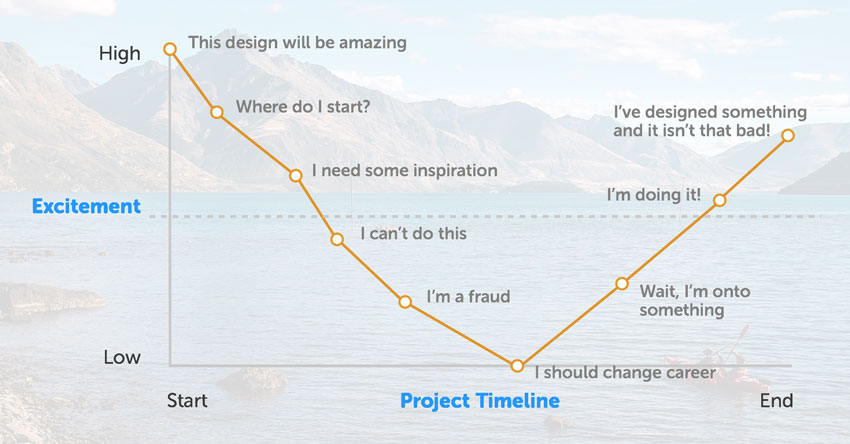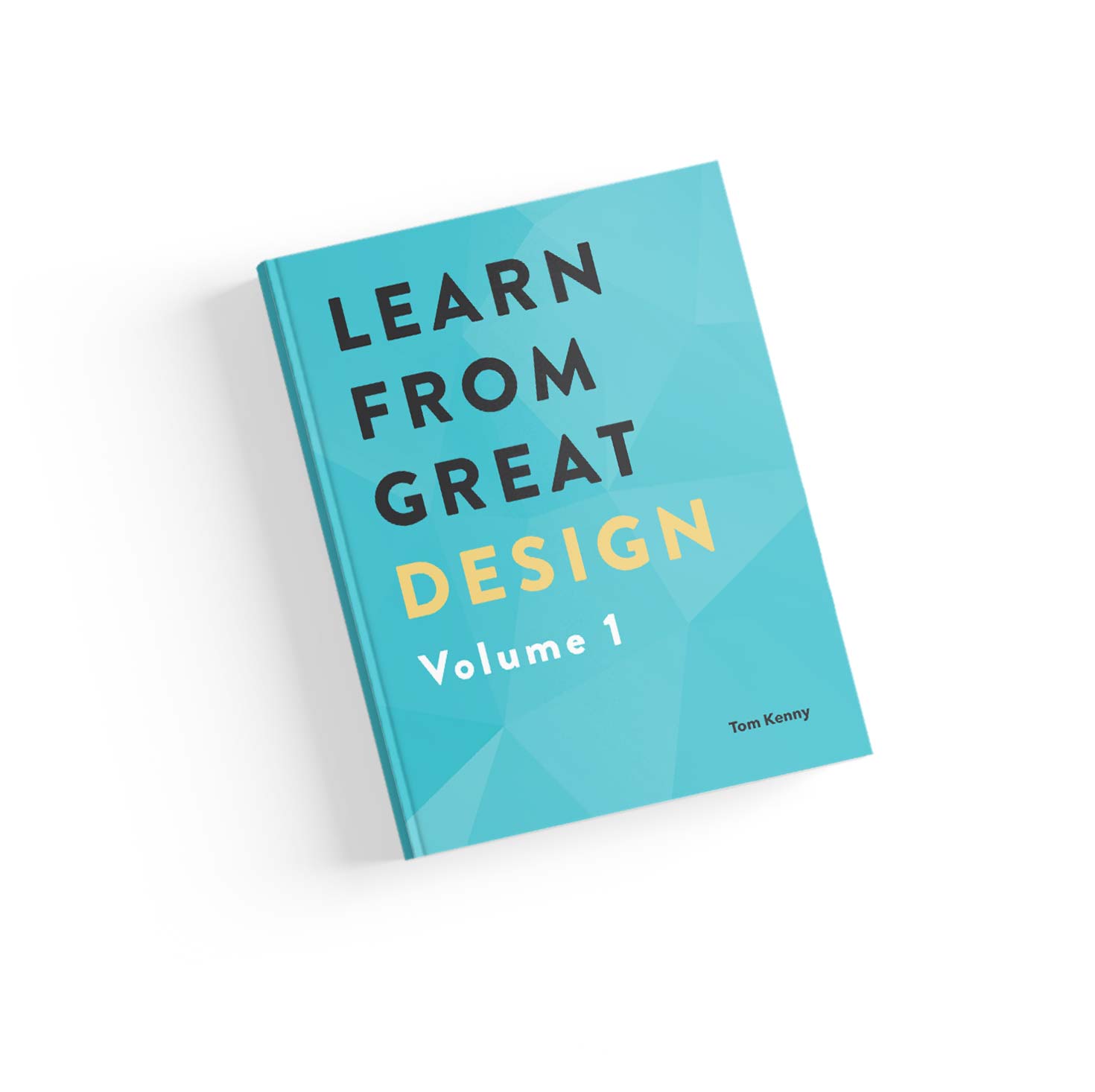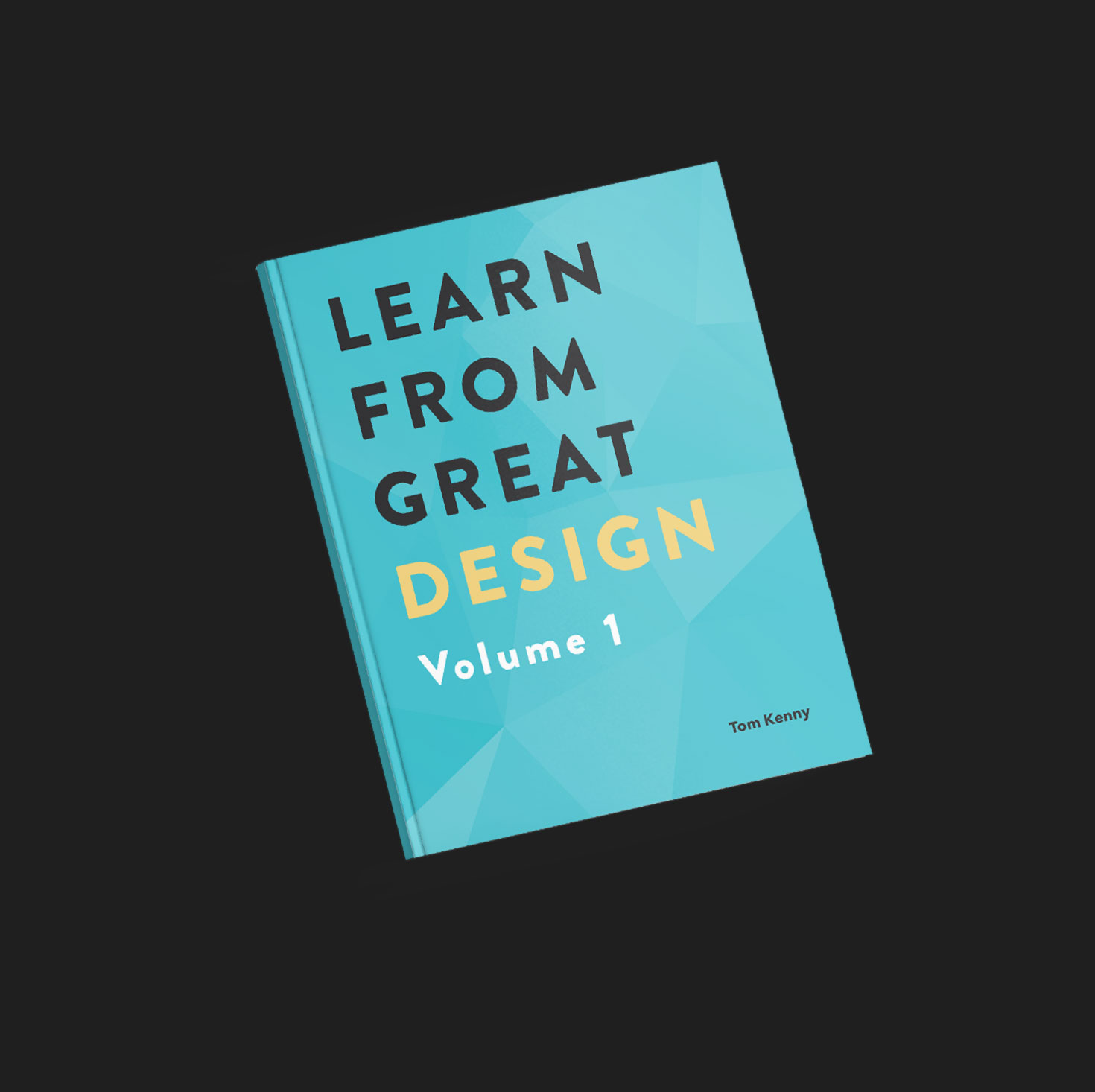A designer’s mind can go up and down like a yoyo but the good news is that you can systematically reduce the low points you encounter to help increase your design confidence.
A typical web design project can look like this:

The dotted line indicates the point you ideally don’t want to go below. Think of it as keeping your head above water. I wish the dip didn’t reach the depths it does but unfortunately designers are susceptible to the moments of low work mood which can have a negative affect on ourselves and the quality of our work.
The graph is more of a general overview of the thought process during a web design project but it’s a process many designers unfortunately go through. Every project is different but most follow this general pattern. Some are easier and others are more difficult with multiple ups and downs but knowing the negative thought patterns is half the battle in overcoming creative block.
What you need is a system that you can rely on to get through these moments and to stop yourself from reaching the dark depths in the first place. Let’s have a look at how we can start creating a system to help us deal with our thoughts:
1. This design will be amazing
New project time! Excitement is at it’s highest point and you’re ready to take on the world. The feeling of starting a new project is great because it’s fresh, something new and you’re ready to do an even better job that you did on your last design. It’s a great way to see yourself progress.
You can almost visualise the design in your head at this point and what you see in your mind is wonderful.
2. Where do I start?
Chances are you have too many directions to head in if this is the question you’re asking yourself at this point. The freedom feels great initially but can pull you apart in many different directions making it more difficult to see the best paths to explore.
Experimenting with different potential directions is important at this stage but not without constraints. You need those constraints to help make decisions easier, so you can avoid the downward spiral we’re looking at right now.
3. I need some inspiration
The most common thing to do at this point is go off and browse dribble or a number of design galleries in search of inspiration. It can be a healthy thing to do if you don’t use it to simply copy but trends tend to be useless and a waste of time.
A common myth of creative block is that you have to wait for that “lightbulb” moment or go in search of it but the lightbulb won’t turn on unless you’ve done the hard work to power it.
4. I can’t do this
Uh oh, this is where the doubts start to creep in but remember you’ve done this before and everything turned out just fine.
Without a solid direction you’ll find it hard to create something that matches your initial vision but with the advice above hopefully you won’t get to this point in future projects, as you will already know where you need to go. The momentum will be positive rather than negative.
5. I’m a fraud
Comparing ourselves to others can be a huge source of creative block, lowering our confidence and make doing our work harder than it should be. I really don’t want you to ever get to this point but it happens to many designers, experienced or not, but it can be defeated.
6. I should change career
This may be nothing more than empty threat in the minds of designers who reach this point but it is not a fun place to be. You definitely don’t want to sink this low, no matter how temporary it is. It’s a waste of time.
7. Wait, I’m onto something
Reaching the bottom means one thing. There’s only one way you can go, and that’s up. It can actually be a good thing because at least you know the only way is up but that’s the only good thing.
8. I’m doing it!
Now you’ve got some momentum and nothing can stop you. This is obviously a great feeling after the negative drop but wouldn’t you want this feeling throughout the project? Of course you would. You shouldn’t have to experience low mood to feel good.
9. I’ve designed something and it isn’t that bad
This may seem like a good end point but it’s deceptive. At the end of a project, rarely is it terrible, but at the same time, it doesn’t always come close to matching the vision you had at the beginning. The unfortunate thought process you’ve just gone through has brought your confidence down so low that by the end, something that is only half as good as what you wanted is “good enough” and no-one starts a project thinking, “This is going to be good enough!”.
It’s much more difficult to reach the heights of your initial thoughts if you have to work you way back up from the bottom in the middle of a project.


